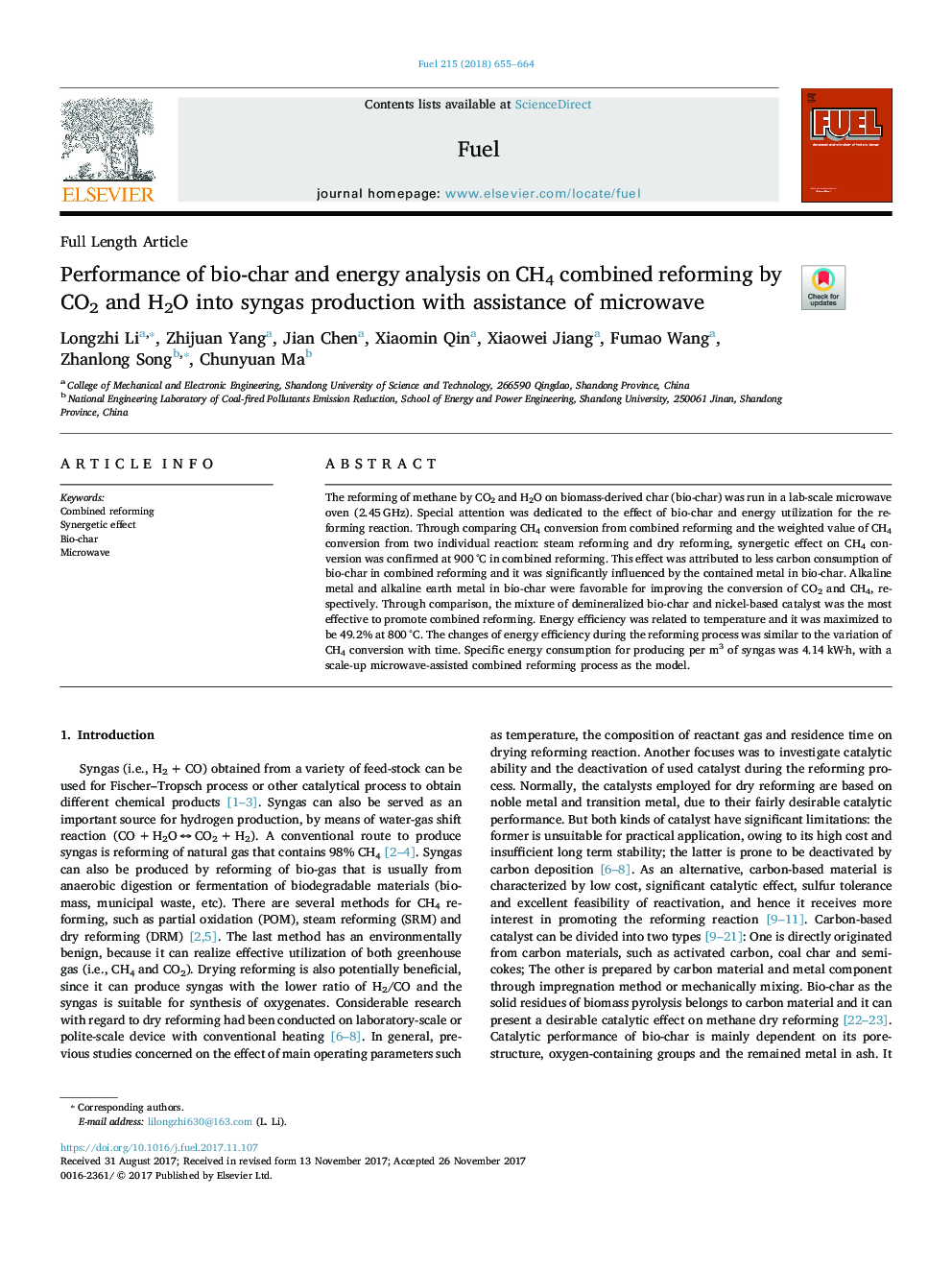| Article ID | Journal | Published Year | Pages | File Type |
|---|---|---|---|---|
| 6632445 | Fuel | 2018 | 10 Pages |
Abstract
The reforming of methane by CO2 and H2O on biomass-derived char (bio-char) was run in a lab-scale microwave oven (2.45â¯GHz). Special attention was dedicated to the effect of bio-char and energy utilization for the reforming reaction. Through comparing CH4 conversion from combined reforming and the weighted value of CH4 conversion from two individual reaction: steam reforming and dry reforming, synergetic effect on CH4 conversion was confirmed at 900â¯Â°C in combined reforming. This effect was attributed to less carbon consumption of bio-char in combined reforming and it was significantly influenced by the contained metal in bio-char. Alkaline metal and alkaline earth metal in bio-char were favorable for improving the conversion of CO2 and CH4, respectively. Through comparison, the mixture of demineralized bio-char and nickel-based catalyst was the most effective to promote combined reforming. Energy efficiency was related to temperature and it was maximized to be 49.2% at 800â¯Â°C. The changes of energy efficiency during the reforming process was similar to the variation of CH4 conversion with time. Specific energy consumption for producing per m3 of syngas was 4.14â¯kW·h, with a scale-up microwave-assisted combined reforming process as the model.
Related Topics
Physical Sciences and Engineering
Chemical Engineering
Chemical Engineering (General)
Authors
Longzhi Li, Zhijuan Yang, Jian Chen, Xiaomin Qin, Xiaowei Jiang, Fumao Wang, Zhanlong Song, Chunyuan Ma,
